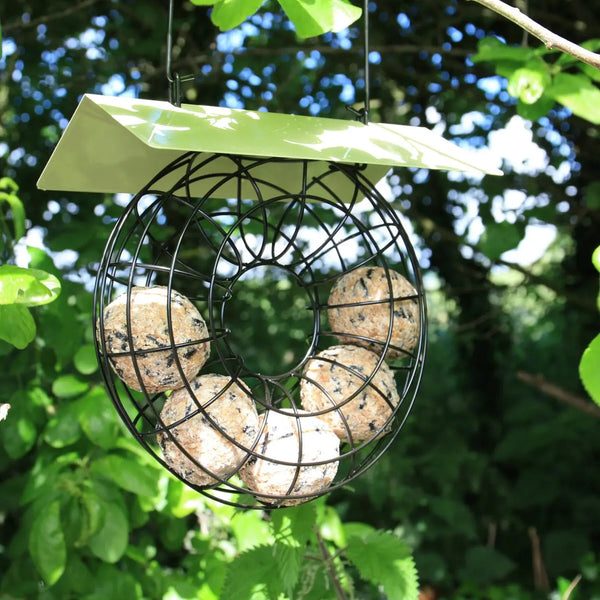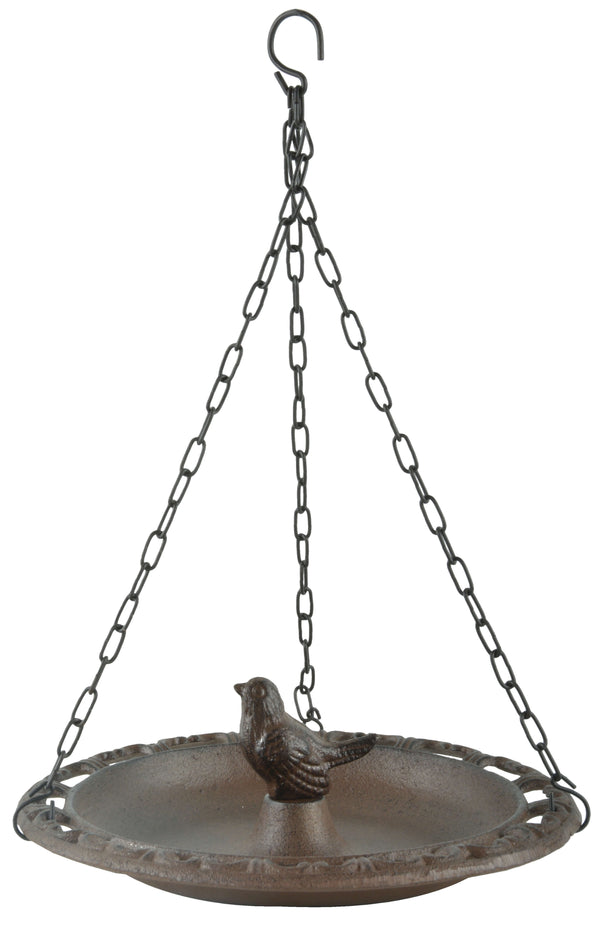All About Marsh Tits - Marsh Tit Facts & Information
About Marsh Tit birds

In Europe and Asia, there is a little brown bird called the Marsh Tit - it is only 12 cm in height and its small body is brown, with a distinctive shiny black cap, pale cheeks, a pale wing panel and a white pale belly. The Marsh Tit belongs to the Tit family.
Before 1897, Scientists who studied birds did not know that this species of Tit existed - this is because it looks so similar to its relative, the Willow Tit, and can be easily confused with each other, they thought the two species were one.
When looking out for this bird, you’ll often see it hopping from branch to branch and foraging hanging upside down.
Globally, the Marsh Tit population is not a threatened species and are of least concern on conservation lists. However, they may face local declines due to habitat loss and fragmentation.
Are Willow and Marsh Tits The Same?
Marsh and Willow Tits are similar, but separate species of birds.
Previously considered the same bird due to the similarities visually, more recent studies have shown that there are some key differences between these Tits.
These birds are both small birds with a glossy cap and white cheeks - however, if you look closely, there are some subtle differences in their appearance. Willow Tits tend to be more brown whereas Marsh Tits have a hue of grey to their brown body. Willow Tits usually have more prominent pale edges on their wing feathers too.
The difference that is the easiest to tell is the vocalisation difference between these two garden birds. The Willow Tit has a nasal ‘hu-it’ call, only Marsh Tits have a call that sounds a bit like a sneeze: ‘Pitchoo’.
Both of these birds live in woodlands, however they prefer different kinds. You’ll find a Willow Tit in a damp and dense woodland, whereas a Marsh Tit hangs out in marshes, stream sides and wet woodlands.
Is the Marsh Tit a UK native?
In the UK, the Marsh Tit is native. This resident bird is found across much of the country, mainly in England and Wales and they are relatively common in habitats across the UK.
Where do Marsh Tits live?

Primarily, Marsh Tits inhabit wet woodland habitats. These habitats are usually damp and marshy areas (as suggested by their name)!
If you’re ever wandering through a deciduous woodland with a range of tree species, make sure to listen out to the distinctive call of the Marsh Tit. This bird will inhabit any woodland, whether mature or young, with a range of tree species including oak, birch and willow.
From their name I’m sure you can tell that Marsh Tits are particularly associated with wetter areas such as being near a stream, river or pond. Any woodland canopy near these wetland areas is the perfect home for this little bird as it gives them the opportunity to both forage for food and nest.
If there are suitable habitat features, you could find Marsh Tits in parks, gardens and other urban green spaces and the wider countryside. In these areas, they are likely to use nest boxes as natural nesting sites may be limited.
How long do Marsh Tits live?
In the wild, the lifespan of Marsh Tits (Poecile Palustris) can vary. On average, they typically have a shorter lifespan compared to other birds. They live for about 2-3 years.
In the perfect conditions, a Marsh Tit could live for 5 to 6 years!
Marsh Tit Breeding Season
When late March comes around, Marsh Tits begin their breeding season, and it can go on until around early July depending on environmental conditions.
In late winter to early spring, the Marsh Tit will begin courtship behaviour. The male Marsh Tit will put on displays and vocalisations to attract a female. Once they have formed a pair, they will begin building their nest and establishing territories.
The Marsh Tit is a cavity nester and will construct its nest in tree holes and crevices. The birds will gather materials such as moss, grass and feathers to make the nest cosier.
Once the nest is ready, the female Marsh Tit will lay a clutch of eggs (about seven to nine eggs). Alone, the female will incubate the eggs for 12 to 16 days. During this time, the female will keep the eggs warm and the male will bring her food.
Once the eggs have hatched and the chicks are here, both the male and the female parent will participate in feeding the young birds. This will last for around 14 days where the parents will look after the chicks.
Once they have flown the nest, the young Marsh Tits remain dependent on their parents for food and protection for a period of time. They will learn to forage and navigate their surroundings before they gain independence.
What do Marsh Tits Eat?
When it comes to food, the Marsh Tit has quite a varied diet. They will mostly eat insects, seeds, nuts and berries.
This bird is insectivorous, this means it will feed on a wide range of insects. When foraging, these birds will look for beetles, caterpillars and spiders - the best places for them to find this food is from foliage, bark and twigs.
Alongside insects, Marsh Tits also eat seeds and nuts - especially during the colder winter months when the insects they enjoy are less abundant.
During the winter, they will also supplement their diet with berries and fruits. These can be berries from shrubs and trees.
Marsh Tit Predators
In the wild, this garden bird faces many predators that threaten their survival.
One of the most significant predators for this small bird are birds of prey. During the day, and at night too, the birds of prey will catch these birds whilst they are foraging or roosting.
Small mammals like the Grey Squirrel loves to target then via nest predation. With their agile climbing, these predators easily enter the Marsh Tit nest.
Cats pose a threat to Marsh Tits, and other smaller birds. These hunters may prey on the Marsh Tit when they venture into gardens or urban areas.
How to Attract Marsh Tits into Your Garden
These garden birds are fascinating and entertaining to watch, so making your garden a welcoming space for these birds is a must for any birdwatcher.
The main thing to do is offer a variety of bird food to attract the Marsh Tit. Particularly fond of seeds, nuts and suet - you can use bird seed feeders filled with a Wild Tit bird seed mix or suet feeders to keep these birds happy. During the colder months, offering these birds suet fat balls is an essential way to make sure they have enough energy and essential fats.
Similar to other birds, Marsh Tits need access to fresh water for drinking and bathing. Provide a bird bath or shallow dish of water in your garden - keep the water source clean and regularly refresh to keep it appealing to birds.
Provide shelter and cover for Marsh Tits by planting dense shrubs and bushes. These plants offer protection from predators and harsh weather conditions.
Marsh Tits are cavity nesters and may use a nest box, so if you have space, install a cavity nest box designed for small birds and place them in quiet areas with cover.
Five Facts about Marsh Tits
-
Marsh Tits have a knack for creative nesting. They often utilise old woodpecker holes or nest boxes, but they've been known to modify their nests by bringing in additional material, such as fur or feathers, to make them cosier and more comfortable.
-
Marsh Tits are expert food hoarders. During times of abundance, they collect and cache food in various locations, such as crevices in trees or even in the ground so that they have a good supply if food sources get low. They have remarkable spatial memory, allowing them to remember the locations of their hidden food caches year round.
-
Marsh Tits have a diverse repertoire of calls and songs, including a distinctive "pitchoo" call. Interestingly, they can also communicate with each other through a variety of body postures, such as head bobbing or wing flicking, adding a visual element to their social interactions.
-
When temperatures drop and food becomes scarce in winter, Marsh Tits display impressive survival skills. They have been observed breaking open seeds and nuts by wedging them into bark crevices and hammering them with their beaks, much like a tiny woodpecker.
-
Marsh Tits have a unique habit of decorating their surroundings. They've been observed collecting bits of moss and attaching them to the entrance of their nests, possibly as a form of camouflage or decoration. This quirky behaviour adds a touch of flair to their woodland homes.










